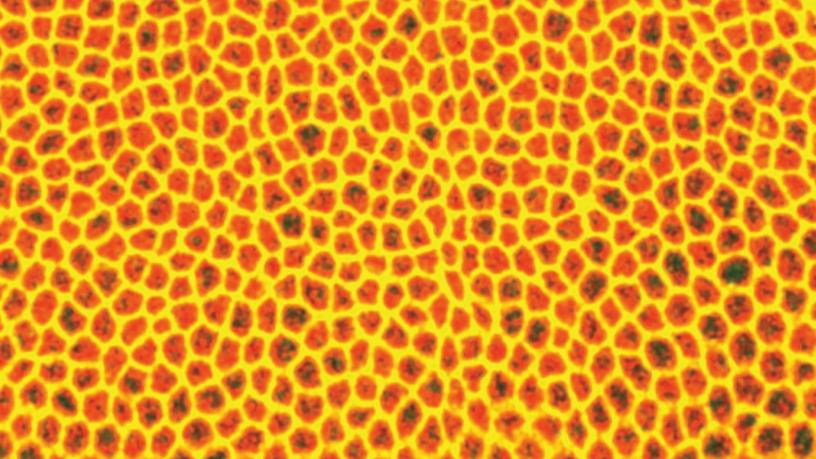Engineering for a Healthy Humanity: Investigating Cell Mechanics

Karen Kasza

Karen Kasza leads an interdisciplinary team to investigate cell mechanics. This image depicts epithelial cells in the developing fruit fly embryo.
Imagine a world where cells could teach us how to heal the human body and prevent disease.
Much research has been conducted on how biochemical factors and genetics affect embryonic development—far less is known about the role mechanical forces play in how tissues first take shape.
Columbia Engineering is helping lead the way in this area of inquiry. With her interdisciplinary Living Materials Lab, Karen Kasza, Clare Boothe Luce Assistant Professor of Mechanical Engineering, brings together engineers, biologists, and physicists to investigate the mechanics of cell and tissue behavior.
“Force is a way to communicate,” says Kasza. “We’d like to understand how cells communicate through force and how other cells elsewhere in the tissue respond to that signal.”
Kasza uses fruit flies as model organisms for her research because of similarities with human genes and development and the fact that researchers can observe how cells and tissues move inside fly embryos. In this way, these models offer insights into how human cells move, change shape, grow, and self-organize into tissues with the properties necessary to function normally.
Recently, she has studied the role of mechanical forces in convergent extension, a process whereby the fruit fly embryo elongates, an important event in human development as well. She also contributed to a study on how cells respond to their environment by altering their mechanical properties and how this process can determine the function, and even fate, of the cell.
By identifying problems that arise in tissue development, Kasza hopes to uncover mechanical factors involved in human birth defects, and even in cancer. Her findings will also result in new pathways for building functional tissues in the lab.
Increased understanding of cell behavior, Kasza believes, could benefit many fields, from tissue engineering and materials science to robotics. “Insights into the rules of how cells communicate and coordinate their activities to build tissues and organs could translate into other areas that involve self-organization and group coordination,” says Kasza.
